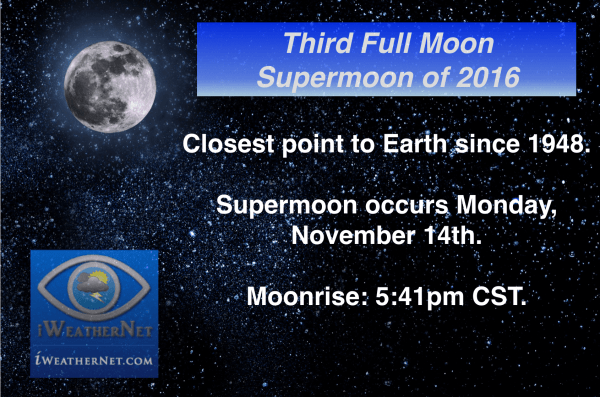On November 14th, our closest celestial neighbor will reach its full phase as it orbits behind the Earth where the sun, Earth, and moon are aligned, respectively. As the lunar orbit reaches its closest approach to Earth, it is called a perigee. The moon’s orbit is elliptical around the Earth and as a result, the proximity of distance between the moon from the Earth varies during each orbital cycle (as do all planetary bodies and their respective satellites in the solar system, but that is not including comets, meteors, etc., that have different orbital patterns otherwise known as orbital eccentricity).

When the moon reaches its closest point to Earth in orbit, it is dubbed the name of a supermoon. The proper nomenclature for the supermoon in the full or new moon phase is called the perigee-syzygy, where the sun, Earth, and moon, are aligned when the moon is in its closest orbital approach around the Earth during the new and/or full moon phase.
The opposite of the perigee is the apogee, for when the moon reaches its furthest point from Earth (otherwise known as a micromoon, or apogee-syzygy). Apogee and perigee periods occur approximately once a month, as a lunar cycle is roughly 27.3 days. A complete phase cycle of the moon is about 29.5 days from new moon-to-new moon phase.

While there is no synchronicity between perigee and apogee periods with respect to the moon’s phase, it just so happens that on November 14th, the moon will be in its full phase while in perigee. The moon will look much larger than usual, and much brighter as the sunlight reflects off of the lunar surface. Thus, astronomers are predicting that the moon will have a lunar illumination ~30% brighter than during a usual full moon phase.
This is the second full moon phase to encounter a perigee-syzygy of 2016, of which the previous supermoon that was in its full phase occurred last month on October 16th. The next time the moon will be even closer to Earth while in its full phase compared to what will occur on November 14th will be in 2034.
